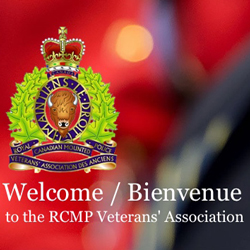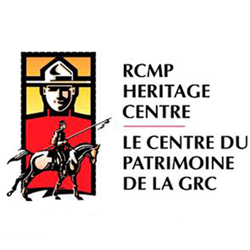Ric Hall: Commissioner’s Annual Report – 1881 to 1882
Veteran Ric Hall has undertaken an effort to review the early North West Mounted Police Annual Reports to the Canadian government.
In so doing, he has provided some of the notable details below for your reading pleasure.
Commissioner Irvine submits his annual Report for 1881 dated February 01, 1882.
“Sir, – In submitting my annual report, I shall first call attention to the surrender of Sitting Bull and refugee Sioux. It is, I think, a matter of the utmost congratulations that the Dominion Government has thus peacefully effected the surrender of a warlike and powerful nation of Indians, whose presence in our country has necessarily been a source of continued and perpetual anxiety. In connection with this surrender I trust the Government has every reason to be gratified with the manner in which its policy has been carried into effect by the force under my command. “
“It will be remembered that in 1877, soon after the Custer fight, Sitting Bull and his followers, numbering some 150 lodges, cross the boundary line to seek shelter in British possessions. It was astounding with what rapidity the news of Sitting Bull’s safe arrival in Canada was transmitted to other branches of Sioux who had up to that time, remained in the United States. This news quickly had the effect of rendering our country attractive to the remainder of the hostile Indians who had taken part in the Custer fight, their numbers being augmented by large bands of Indians of the same tribes who previously had been located in American reservations – in other words, a general stampede took place and in an extremely short time Canada became the home of every Sioux Indian who considered himself antagonistic to the American Government.”
“Almost immediately after Sitting Bull’s departure from Wood Mountain, I reached that place; on arrival I instructed Inspector Macdonell to proceed to Fort Buford, notify the American authorities, and telegraph you on Sitting Bull’s surrender. As I have previously reported, this officer carried out my instructions most satisfactorily. The final surrender was made at Fort, Buford, U.S. on the 21st July last,, in presence of Inspector Macdonell. Before leaving this subject I cannot refrain from again placing on record my appreciation of the services rendered by Superintendent Crozier, who was in command at Wood Mountain during the past winter. I also wish to bring to the favorable notice of the Dominion Government the loyal and good service rendered by Mr. Legaree, trader, who at all times used his personal influence with the Sioux in a manner calculated to further the policy of the Government, his disinterested and honorable course being decidedly marked, more particularly when compared with that of other traders and individuals. At the final surrender of the Sioux, Mr. Legaree must have been put to considerable personal expense, judging from the amount of food and other aid supplied by him.”
In July 1881 Fred White, Comptroller of the NWMP, informed Commissioner Irvine that the Force would provide an escort for the Governor General of Canada, Sir John Douglas Campbell (the Marquess of Lorne) while he toured the North West Territories. The escort consisted of 22 men and 31 horses, led by Sergeant Major Lake and Superintendent Herchmer.
State of the Force – 293 officers and men, 428 horses, 140 remounts and 5 colts taken on strength.
“In my annual report of last year I pointed out the urgent necessity of increasing the strength of the force by 200 men. I have now to repeat my previous recommendation, in addition to which I shall also endeavour to bring to your notice any further facts that I consider of sufficient importance to warrant the increase I have mentioned.”
Acceptance of Recruits – “In addition to my last report as to the class of recruits desirable I would recommend that the minimum age be fixed at 21 years, except under exceptional circumstances. Experience has shown that undeveloped boys are unable to with stand the hardships which members of a force like the police are called upon to perform. For ordinary and routine duty about a Post a boy of 18 years may answer fairly well; but for winter trips, or, in fact, any laborious duty, more seasoned men must be selected. If it is found necessary to send out boys in a winter party the chances are that their names will adorn the sick list for a long time after their return.”
Clothing and Kit – “Suffice it to say that the scale of clothing and kit which you have seen fit to approve of is ample for the requirements of the force. By this scale the wants of the non-commissioned officers and men are fully provided for. I am happy also to be able to report that the clothing supplied last year is of superior quality and well calculated to meet the wants of the force.”
Saddlery – “I would most earnestly recommend that a uniform pattern of saddle be adopted through the force.”
Officers’ Saddlery – “Since the formation of the force no regulation officers’ patter saddle has ever been supplied the officers. This want has been much felt; it is of unquestionable importance, bears directly on the efficiency of the force. It is essential that the officers’ saddles be of uniform pattern, that the officers may present a respectable appearance on mounted parades. I recommend that twenty-five officers’ saddles be ordered at once of the same pattern as used in Imperial Cavalry regiments.”
“Before closing my report I wish to mention the universal support and hearty co-operation I have received from the officers, non-commissioned officers and men of the force. This support has, almost without exception, been invariably extended to me since my appointment as Commissioner.”
Commissioner Irvine submits his Annual Report for 1882 dated January 01, 1883
The old Commissioner was pretty diligent in his Diary Dates in getting his reports off on time. He notes to the Minister of the Interior.

1885 Early photograph of ‘pile of bones’ which later became Regina (Source of the photo – RCMP Veterans’ Association – Vancouver Division’s Photo Collection).
“By your telegram of the 29th July last, I was informed of your decision of the Pile of Bones Creek being the headquarters of the force, also the number and dimensions of the section buildings for stables and quarters. The telegram reached me at Fort MacLeod. Soon after my return from that Post to Fort Walsh, I proceeded to Qu’Appelle; after having inspected “B” Division, I accompanied His Honor the Lieutenant Governor to the Pile of Bones Creek. I instructed Inspector Steele, who had accompanied me, where buildings were to be situated. I immediately moved the headquarters of “B” division from Qu’Appelle to Regina. At the end of October the section buildings commenced to arrive and building was proceeded with.”

1882 photograph of the NWMP “Depot” Division prior to the construction of the buildings (Source of photo – RCMP Veterans’ Association – Vancouver Division’s Photo Collection).
“I called your attention to the necessity of adopting some saddle for the Force, and purchasing a supply at once. I recommended the English high cantle dragoon saddle with several changes, and asked that a pattern saddle be obtained at once in order to thoroughly test it. I also obtained a Californian saddle of what I consider the best pattern. Both of these saddles thoroughly used were tested, with the result that I found that the California saddle was the most suitable one for the different uses to which they required to be put, and also that in all cases the men preferred them in long rides.”

Photograph of the California style saddle (Source of photo – RCMP Website -http://www.rcmp-grc.gc.ca/hist/ue-eng.htm)
“You are aware that we are still obliged to retain in use at Regina and Battleford a number of Snider carbines. These carbines, owing to long and hard service, are fast becoming unserviceable, in addition to the arm itself being obsolete one, and inferior to that which most of the Indians are armed. Two years ago I alluded to certain defects existing in the first pattern of Winchester carbine supplied to the force. In the new carbine, manufactured expressly for the force by the Winchester Arms Company, all the old defects have been obviated. I beg to recommend that the whole force be at once supplied with Winchester carbines of the same pattern (model 1876) as those purchased from the Winchester Arms Company.”

Photograph of of North West Mounted Police members with their new Winchester rifles (Source of photo – RCMP Photo Collection in Ottawa).
Clothing and Kit – “The new scale of clothing and kit entirely removes the possibility of any dissatisfaction and amply provides for the wants of non-commissioned officers and men. I am pleased to be able to report that the clothing and kits supplied during the last years are of good make and quality, with the exception of the breeches and long boots. As I have but very lately forwarded detailed reports containing suggestions as regards the changes which should be made in the future supply of these two articles. I need not in this Report deal further with this matter.”


 February 16, 2015
February 16, 2015 












